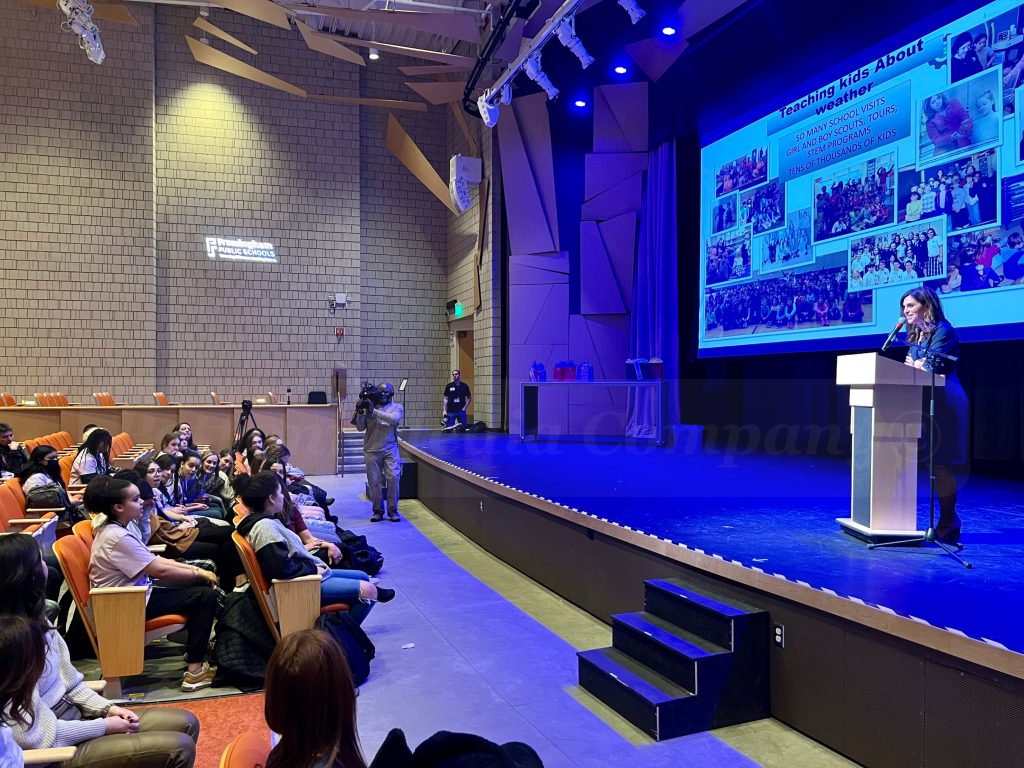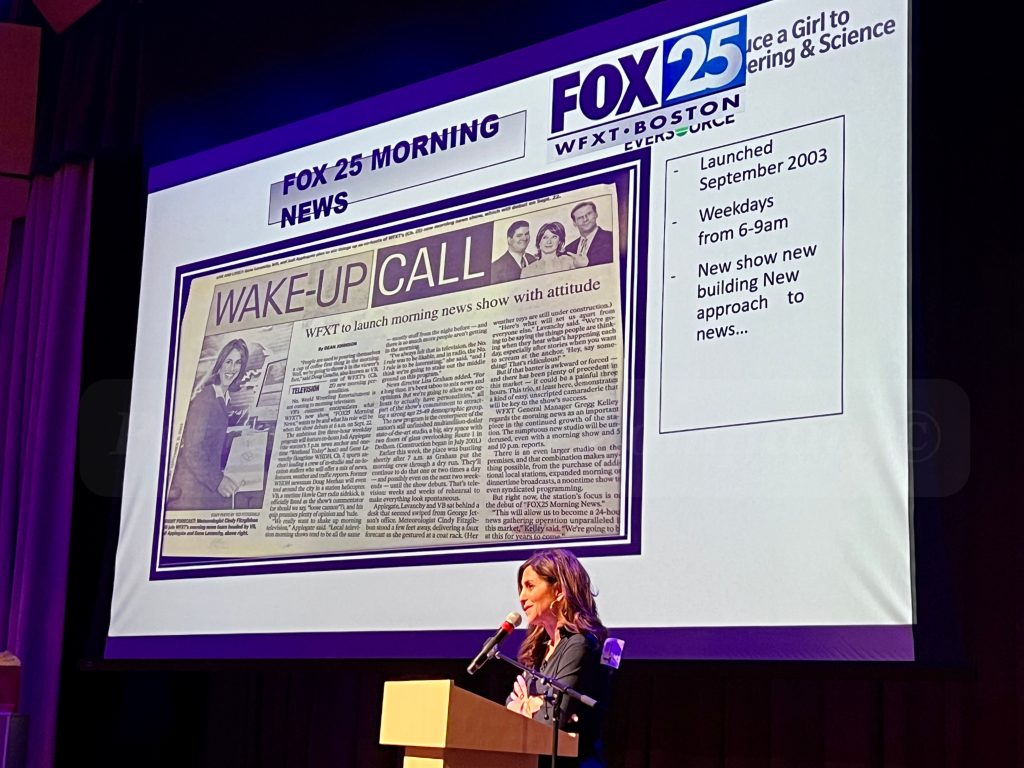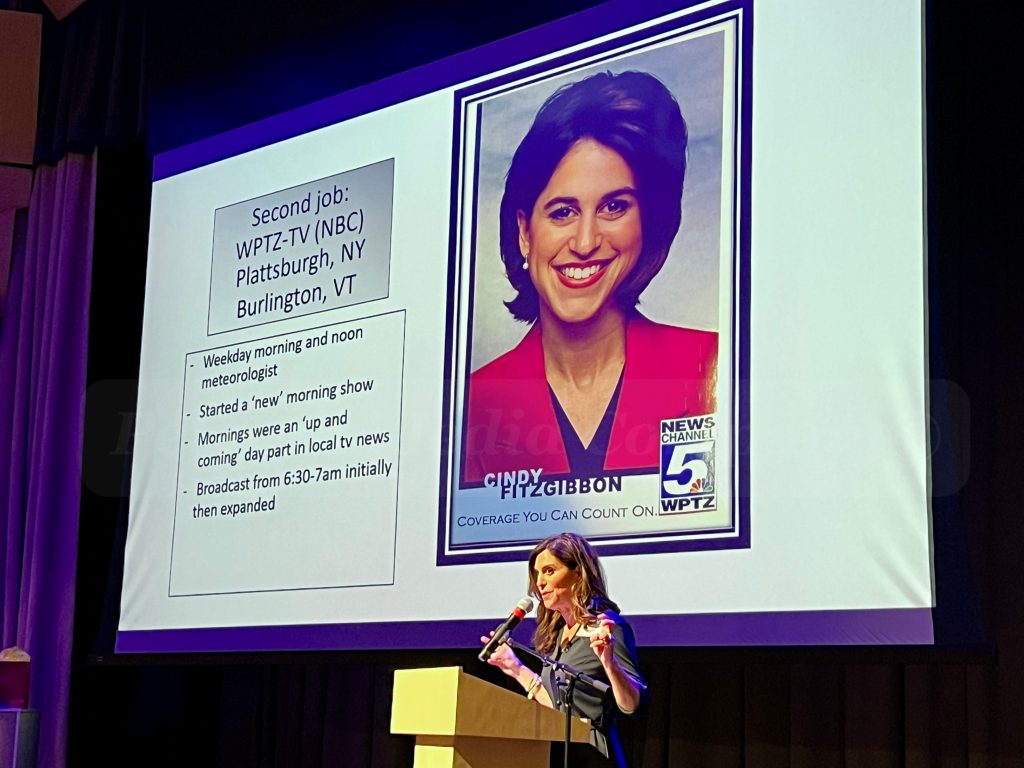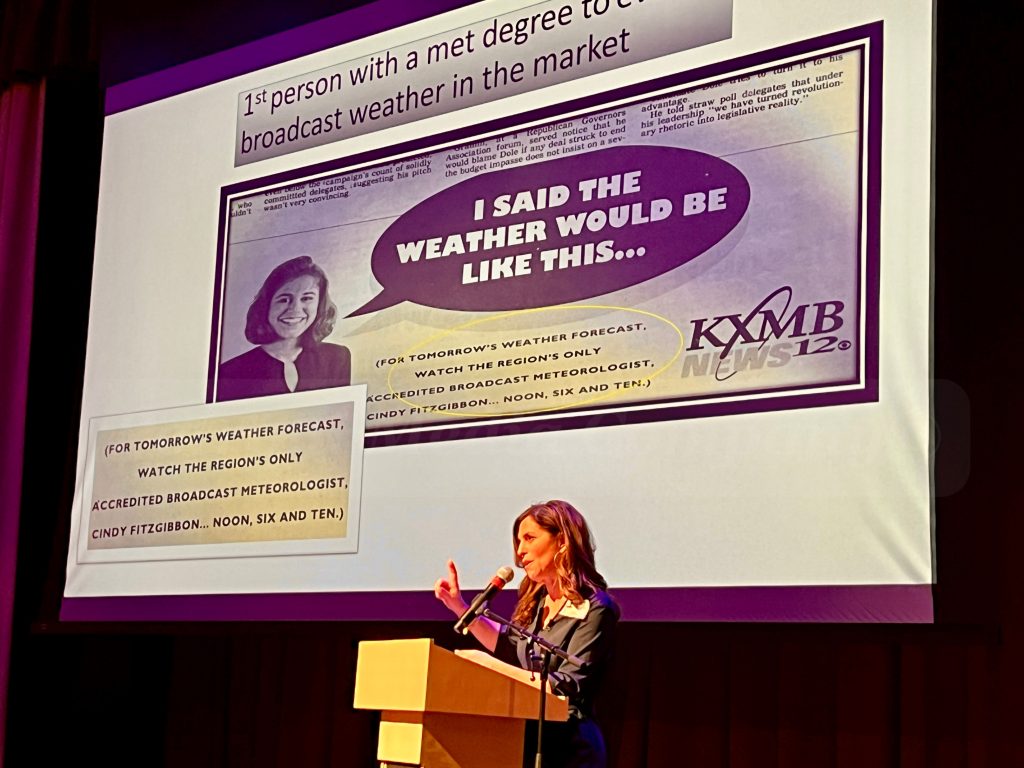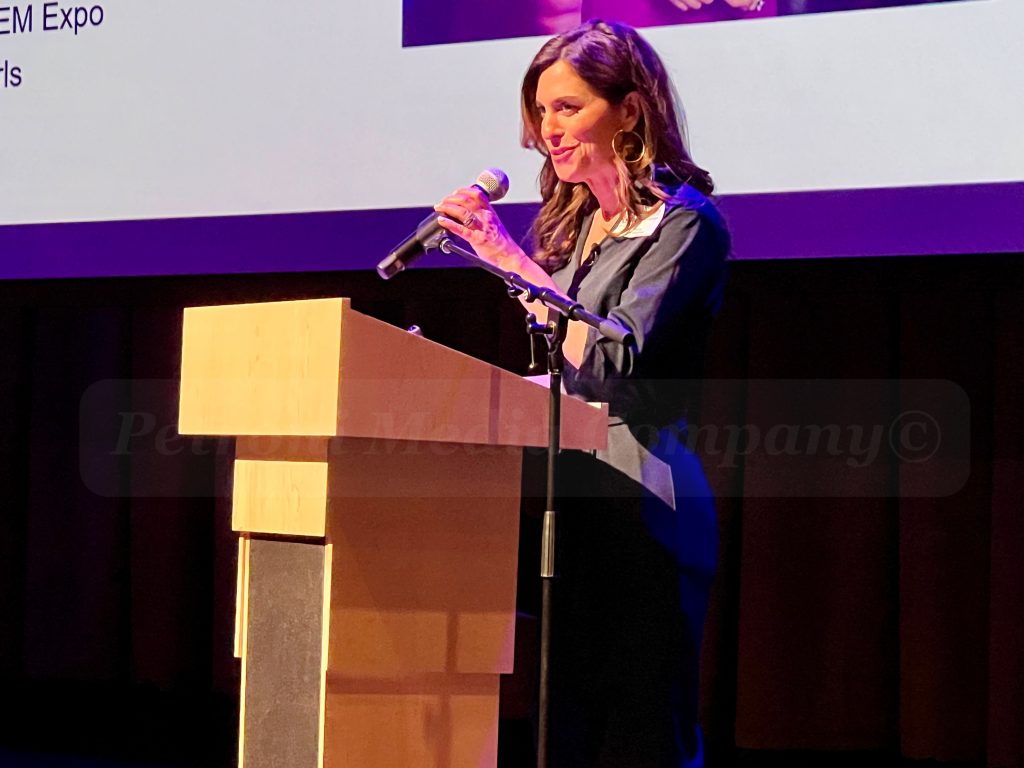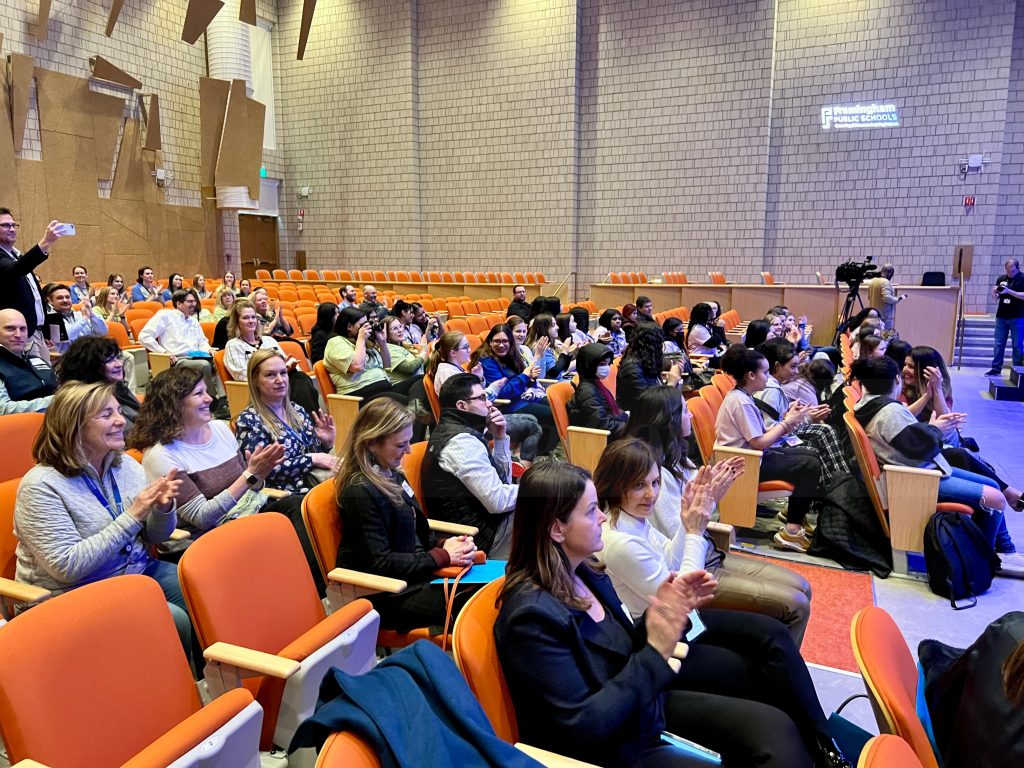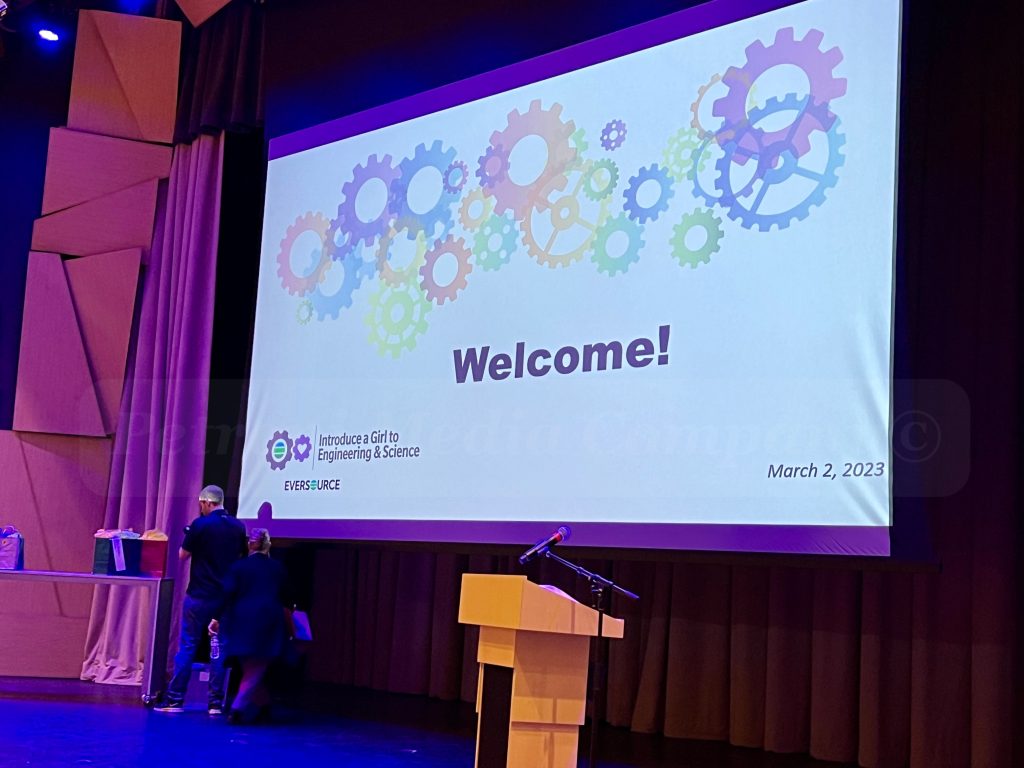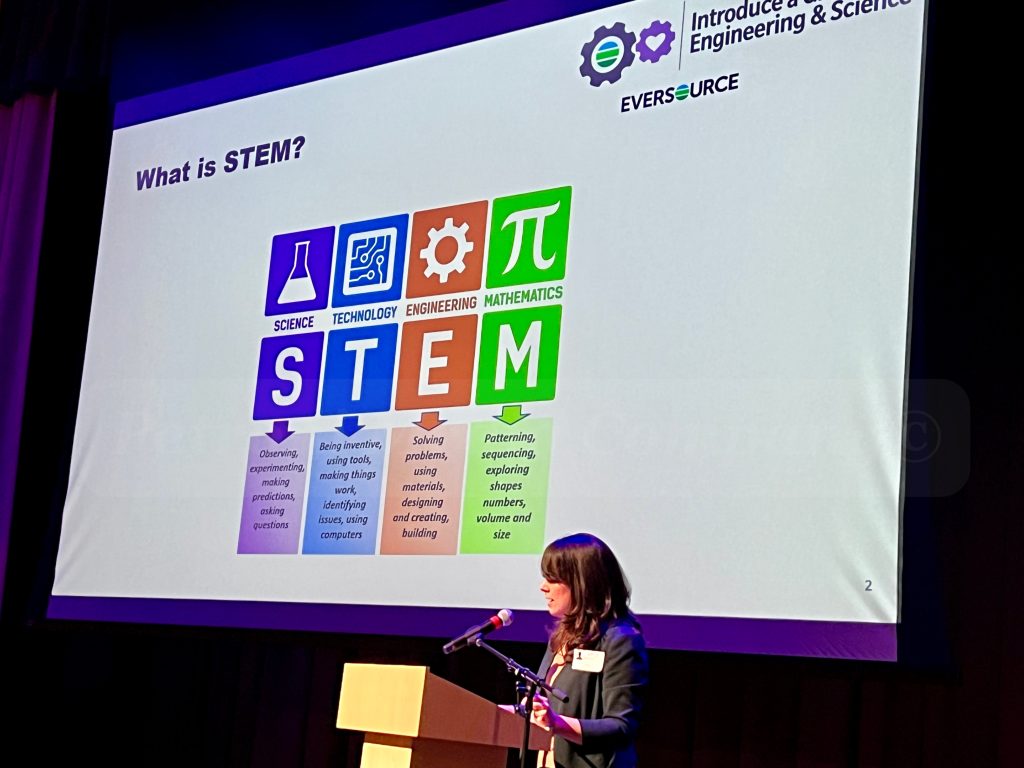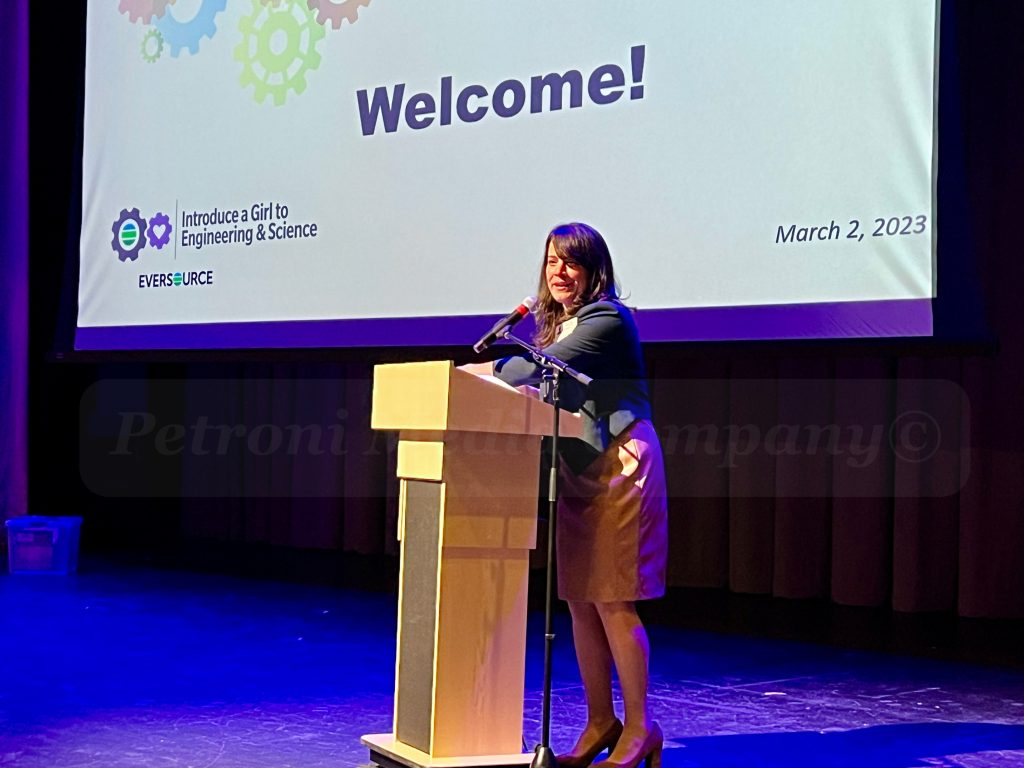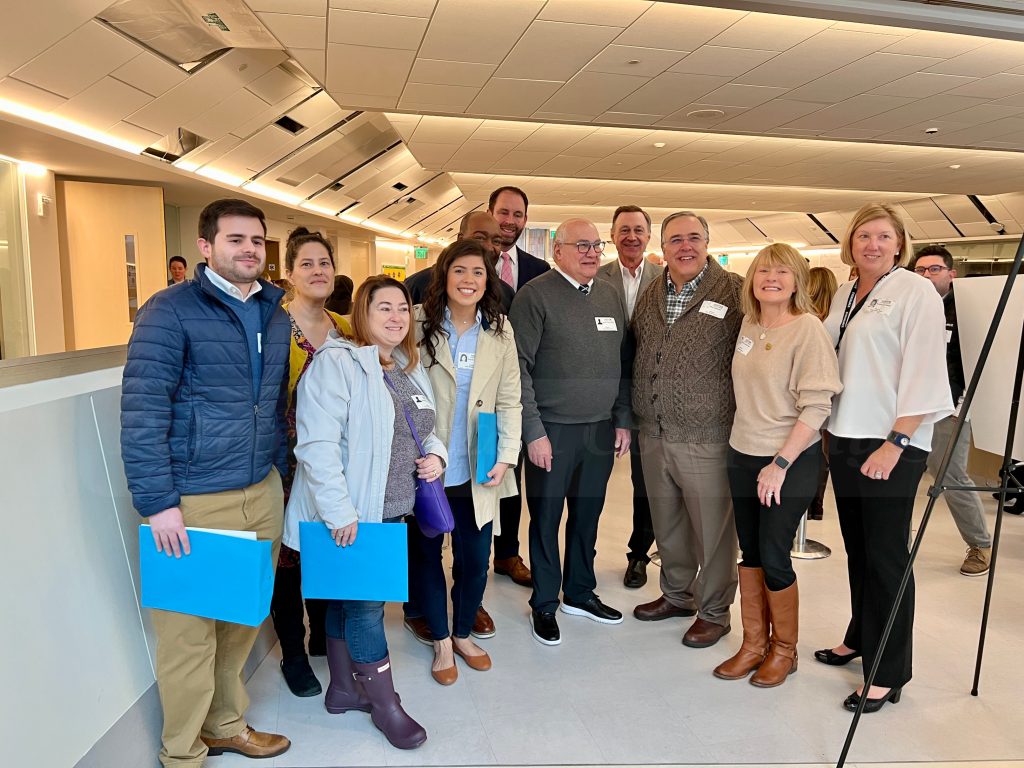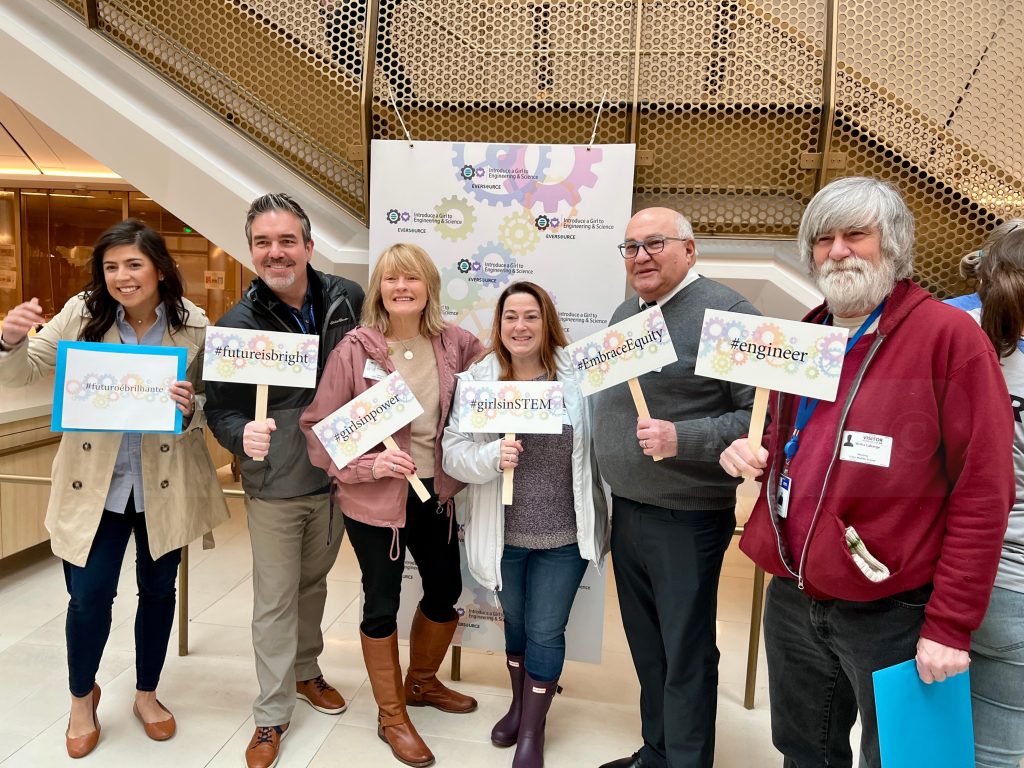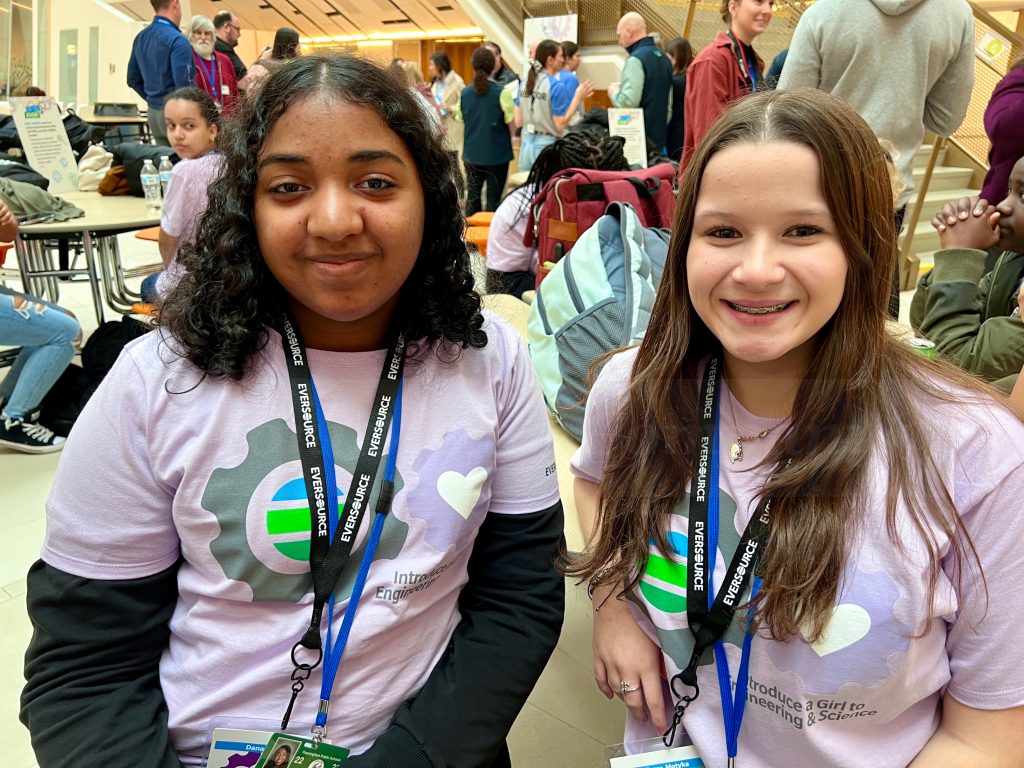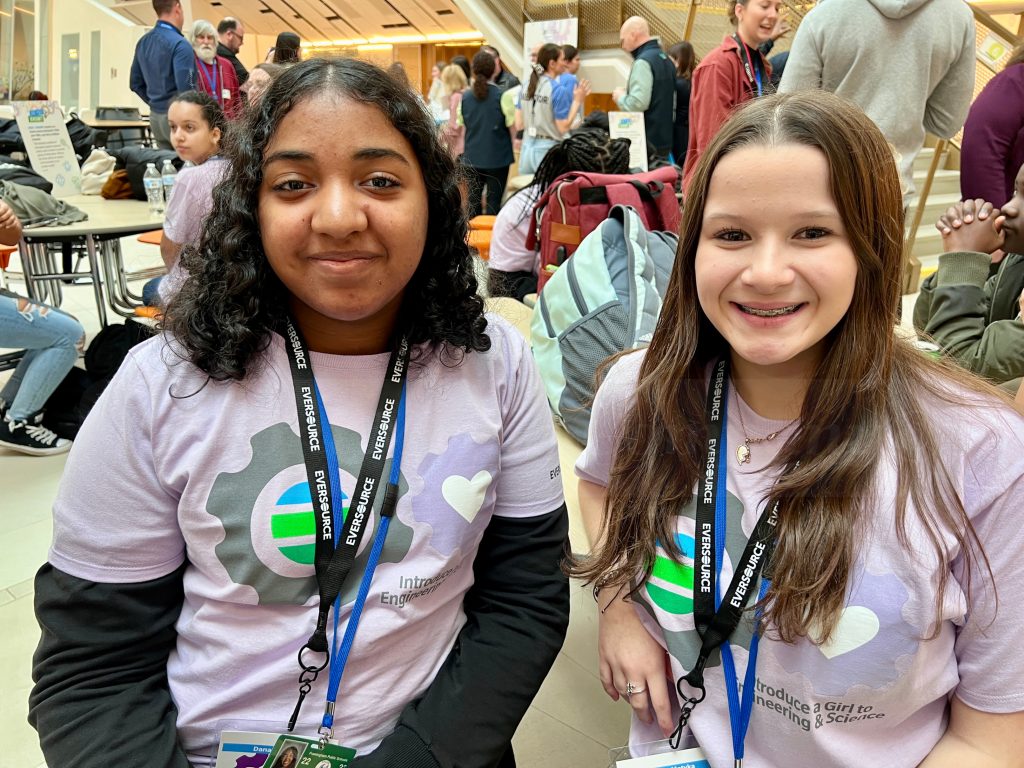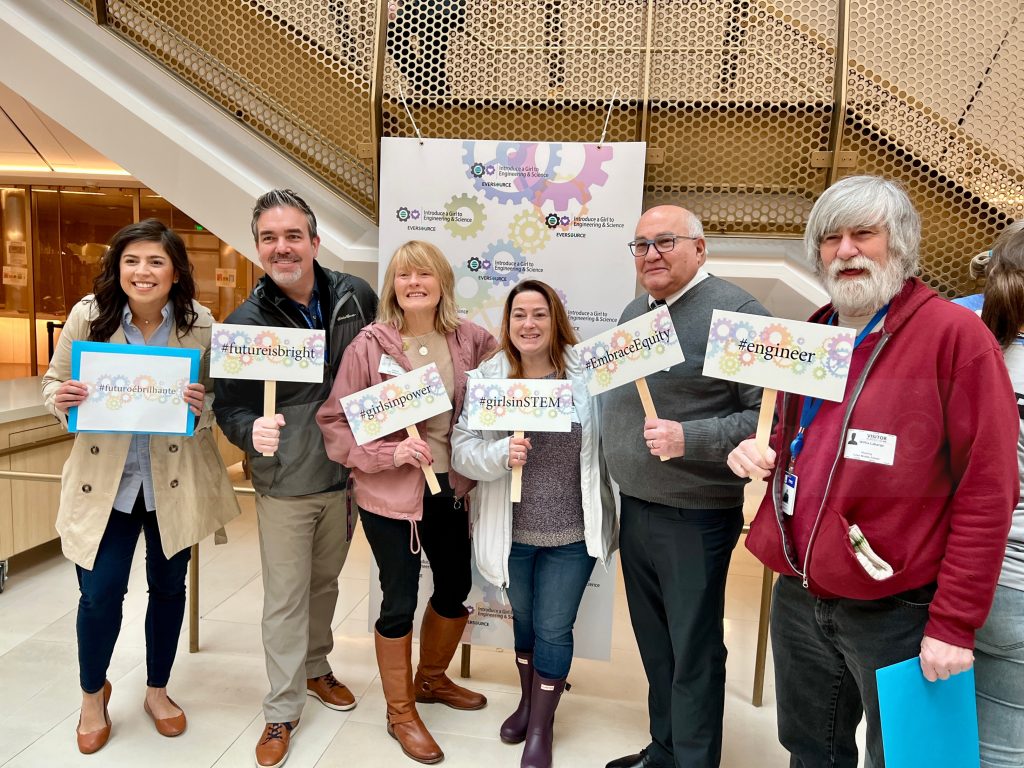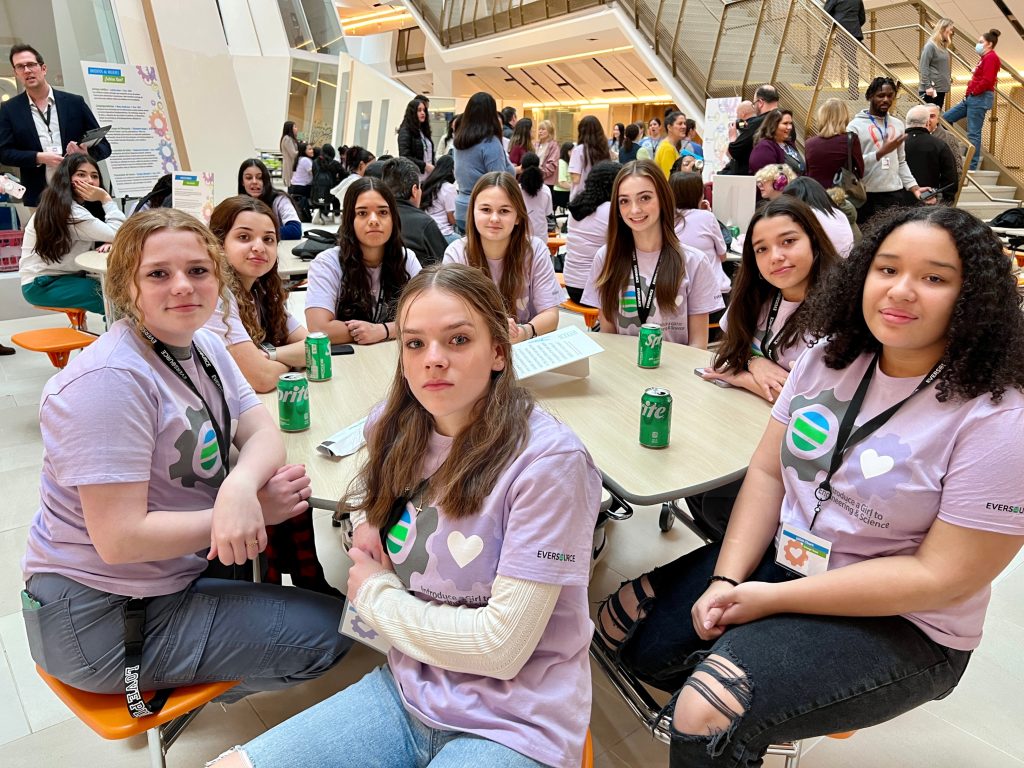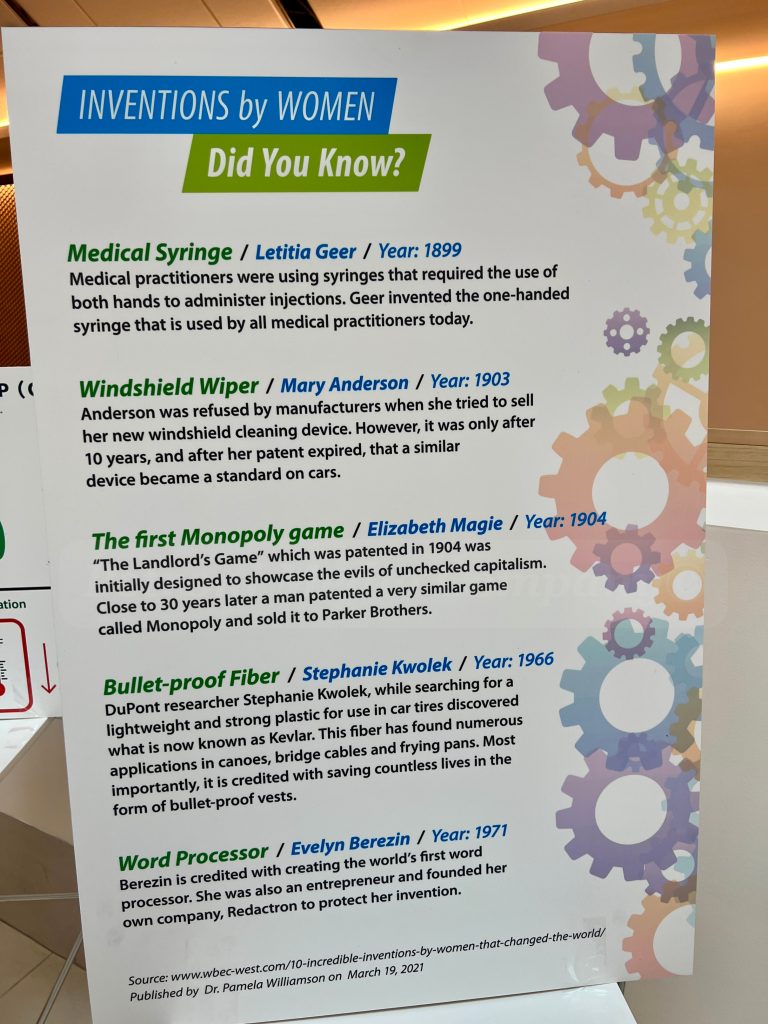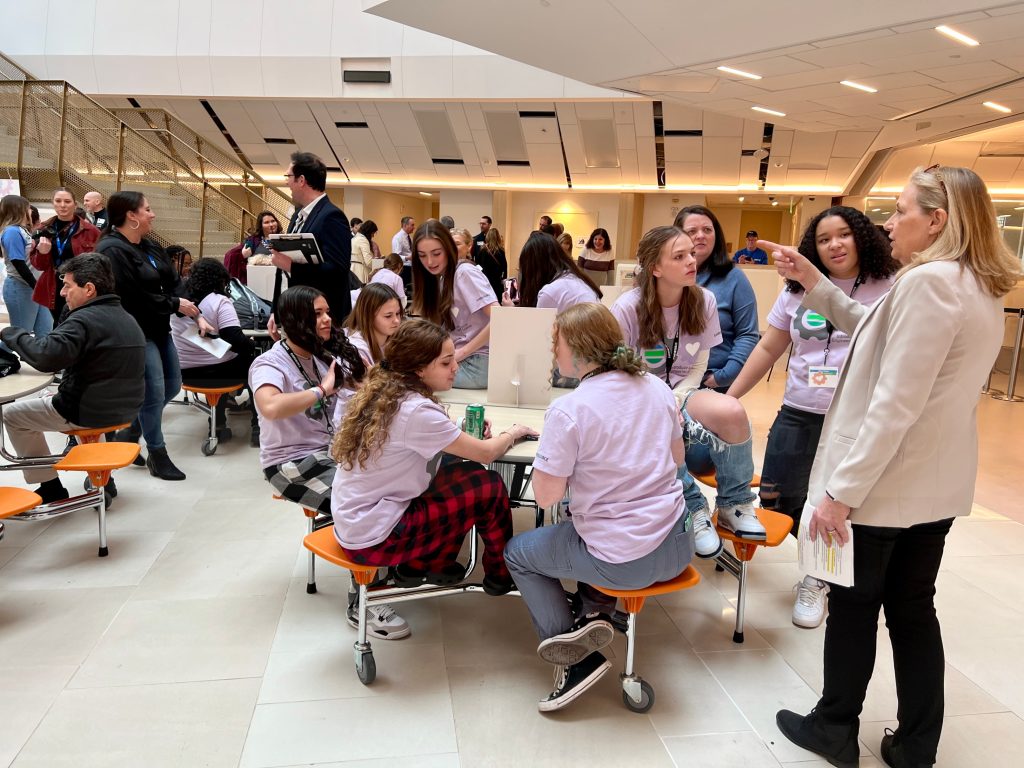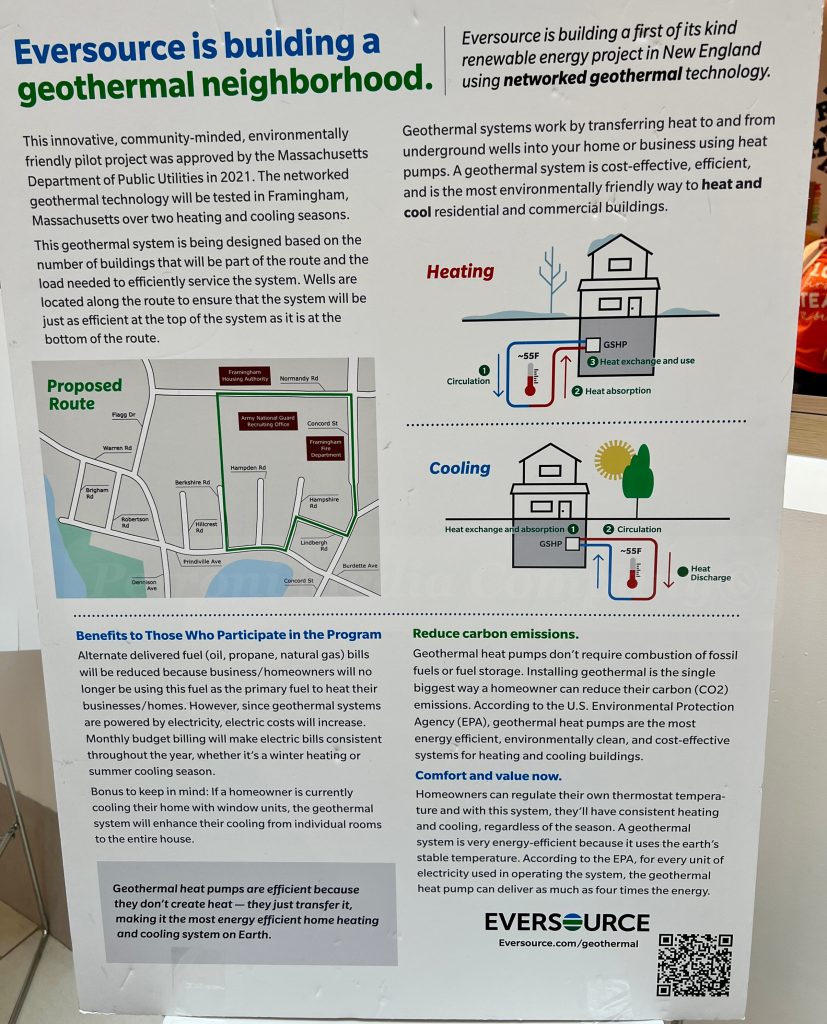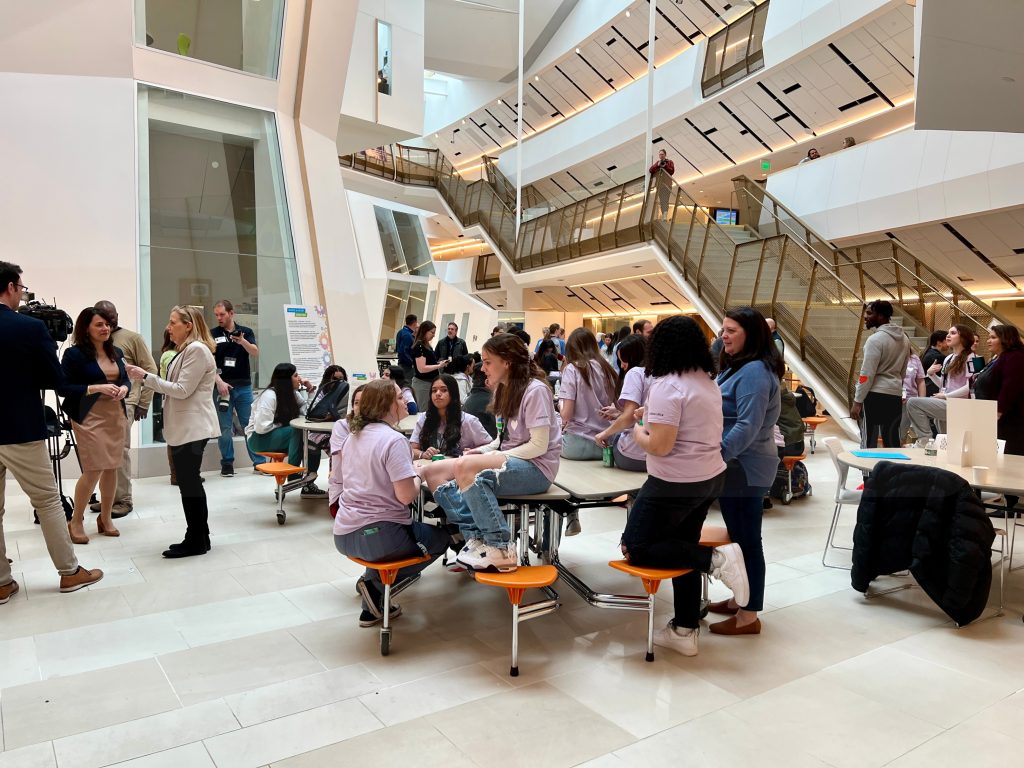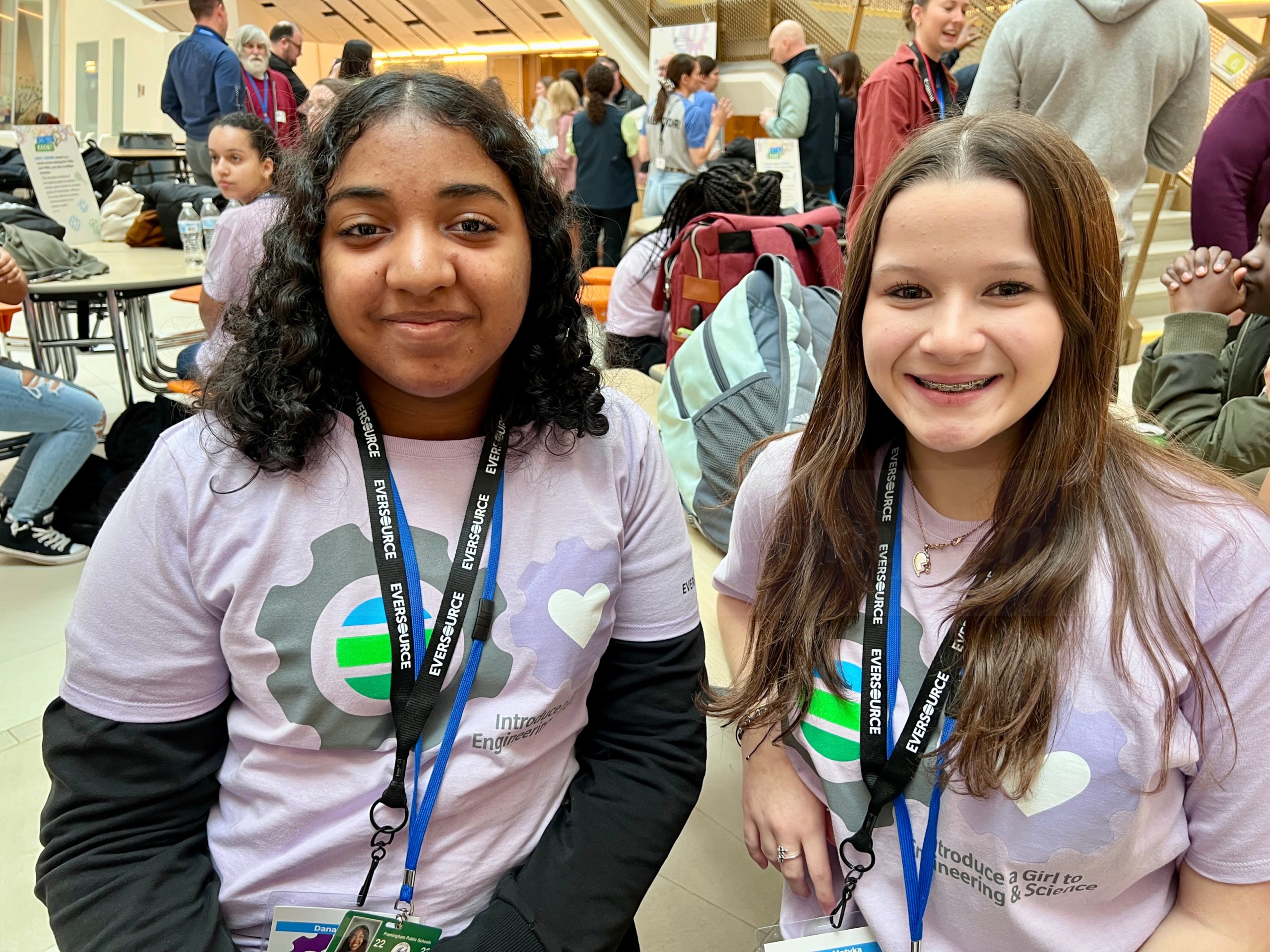[broadstreet zone=”53230″]
FRAMINGHAM – Eversource is building the first-in-the-New England geothermal neighborhood in the City of Framingham.
The innovative project, approved by the Massachusetts Department of Utilities in 2021, will be located adjacent to Fuller Middle School.
On Thursday, Eversource held a girls in STEM event with grade 8 students at Fuller Middle, to explain the project and get them excited about careers in science, technology, engineering, and math (STEM).
The students worked in teams to lower the temperature of a soda can.
The experiment demonstrates the concept of heat transfer, which is being used in the geothermal pilot project that is being constructed in the City of Framingham between Concord Street and Prindiville Avenue.
“We had to get a soda can, as cold as we could in 15 minutes, said Fuller grade 8 student Molly Donahue. “We used a plastic cooler and the cooler already had icy water in it, so we put salt in it and then we covered the can in tinfoil.”
Her team was able to get the soda can to a temperature of 5.3 degrees Celsius.
[broadstreet zone=”54526″]
Media was not invited to the experience sessions, just to the awards ceremony. SOURCE interviewed some of the students while the judges decided on the winners.
The lead judge was Cindy Fitzgibbon, chief meteorologist for WVCB-TV
The other judges were Jo Ann Bodemer, Assistant Attorney General for energy and telecom division, Kelly Caiazzo, Assistant Attorney General for energy and telecom division, Ariel Horowitz, senior program director for technology development at the Massachusetts Clean Energy Center, Zeyneb Magavi, co-executive director for Home Energy Efficiency Team, and Susan Nicholl, district and special project director for Senate President Karen Spilka.
The cooling of a can of soda requires thermal energy to be transferred from the can to a water bath, ultimately cooling down the can.
While the coldest can received the most points, other points were awrded for teamwork, creativity, independence, motivation, and testing methods.
“Basically, we’re trying to keep a soda can to be as cold as it could be,” said grade 8 student Jayla Sharon. “First we had a cooler. We got a foam cooler and then we put the soda can in it, and then see how cold it is. Thenwe had a choice to do salt or ice and we chose to put more ice. And then for the installation we covered it in tinfoil, but also added ice. And it stayed cold.”
She said the coldest temperature they got was 30 degrees Fahrenheit.
[broadstreet zone=”58893″]
[broadstreet zone=”59948″]
Fuller grade 8 students Beatrice Avelar said they had a budget of $15.
“First we got a foam cooler and we put some ice and some water in there and we let the soda can sit. And for our insulator we used a koozie and we put the koozie also in the cooler.”
She said the coldest temperature her team achieves was 5.3 degree Celsius.
Grade 8 student Isabelle Parmensi said “we put it in a plastic container full of ice and water, and then we put it with an ice pack. And then for the insulation we wrapped it in aluminum foil because that keeps heat and cold.
She didn’t remember what the coldest temperatures was, as she said science was not a field she would like to explore.
Fuller student Danasia Lopes said she started off using the “cheapest container. It was a container, not a cooler. And then I used an ice pack to make it cooler after 15 minutes. And then after another 15 minutes we took it out of the cooler and we used foil. And then the foil really cold it up and it made it really, really cold.”
She said the coldest temperature her team achieved was 4.7 Celsius, which is roughly 40 degrees Fahrenheit.
[broadstreet zone=”52386″]
Teams Ice Age and Salmon Ladies were the big winners.
Teams Bananas and Aqua Women got the greatest temperature change.
Teacher Trish Martino said the girls in her science class were a little nervous about participating.
“They’re all very quiet and shy, but when we started the group work, they were able to work really independently and I think they felt really empowered to be able to contribute to their group,” said Martino. “The other girls from the other classes, who they normally don’t interact with, were so patient and really focused on helping the,. They really were wonderful. And you can see how happy the girls were about the project.”
Clean Technologies Vice President Nikki Bruno gave a shout out to the women engineers from Eversource who developed the experiment and were mentors to the teams of girls.
During the awards ceremony, Fitzgibbon, who lives in Natick, said she grew up in Portland, Maine and earned her Bachelor Science in Meteorology from Lyndon State College in Vermont.
[broadstreet zone=”53903″]
The first geothermal networked neighborhood will provide electricity for residents, businesses, and even a Framingham Fire Station in the pilot block area.
Geothermal heat pumps are efficient because they don’t create heat – they transfer heat. This makes the technology the most energy-efficient home heating and cooling system on earth.
Mayor Charlie Sisitsky and Superintendent Bob Tremblay attended the awards ceremony on Thursday.
State Rep and School Committee Chair Priscila Sousa attended the event as did District 3 School Committee member Jennifer Moshe and District 9 School Committee member William LaBarge.
Also in attendance was City Councilors Janet Leombruno, Noval Alexander, and John Stefanini.
City of Framingham Sustainability Coordinator Shawn Luz also was in attendance.

